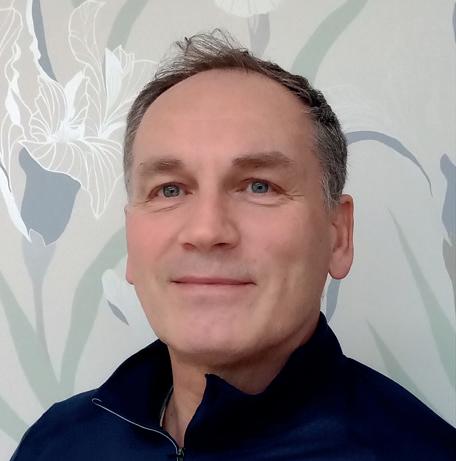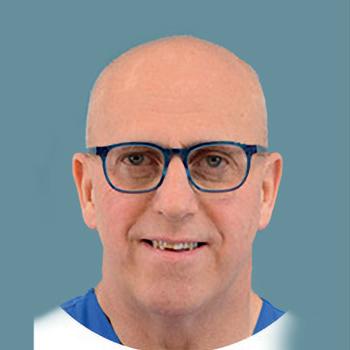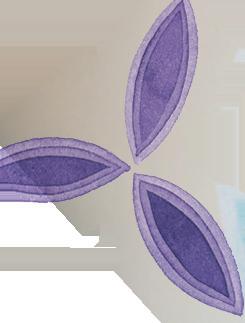
10 minute read
In practice
from OT April/May 2023
by TheAOP
A new solution for vitreous floaters The panel
In a roundtable discussion, hosted in partnership with VivaQuity, OT investigates how floaters are managed in practice, and explains the research behind a daily supplement that could have significant benefits for patients’ quality of life
Advertisement
While floaters may reduce quality of life as well as visual performance, many optometrists will be acutely aware that discussing treatment with patients is not always straightforward
– whether because of cost, hesitation around private treatment, or the potential side effects of surgery.
Now, the answer could be found in a nutritional supplement that is new to the UK market – but that has been used successfully in Germany for a decade.
Designed to be taken daily, VitroCap N uses ingredients including vitamin C, grape seed, and citrus fruit extract, as well as L-Lysin and zinc, and has been found to
Dr Frank Eperjesi, optometrist and EyeTools co-founder
Dr Scott Mackie, optometrist and owner of Mackie Opticians
Dr Thomas Kaercher, ophthalmologist decrease the quantity of floaters in 77% of patients across a double-blind, placebo-controlled study.
Professor John M Nolan, Nutrition Research Centre Ireland at South East Technological University.
The six-month Floater Intervention (FLIES) Study demonstrated significant improvements in subjective visual disturbances, as well as vitreous opacity density and contrast sensitivity. During a roundtable hosted in partnership with VivaQuity, OT spoke to two
FLIES in context: key numbers
343
The number of patients screened ahead of the FLIES study
61
The number of participants recruited onto the trial
6
The number of months taken to see a benefit to those taking VitroCap N
20%
The average shrinkage of floaters in 70% of patients taking the VitroCap N
67%
The subjective improvement success rate of the FLIES study
77%
The objective success rate (reduction in floater quantity) of the FLIES study.
UK optometrists about their current management of floaters in practice, discussed
10 years of experiences of VitroCap N with a German ophthalmologist, and heard from an Irish vision scientist about the years of research that have gone into confirming the supplement’s viability.
Identifying vitreous floaters in the testing room
In Scotland, Dr Scott Mackie finds that he rarely goes a day without encountering a patient who is being troubled by floaters – in fact, he identifies around 10 instances of posterior vitreous detachment (PVD) every month. He initially asks the question as part of his history and symptoms, and follows up by identifying how much the floaters impact on quality of life. “I move on to ask if their floaters are getting worse, regarding duration or intensity,” Mackie, owner of Mackie Opticians, a Hakim Group practice, explained. “I ask when it troubles them the most. Night driving with floaters is a nightmare.”
For Mackie, coming across a retinal detachment is much rarer than it is a PVD – allowing quality of life to be the main discussion point. As well as night driving, he sees reading as something that can be vastly impacted by floaters. He demonstrates the effect that floaters are having via a low contrast chart, which he finds “a bit of a game changer” for patients.
The Scottish requirement to dilate every patient means that Mackie sees more floaters than he might in another location – especially in myopes, as the vitreous starts to deteriorate after the age of 21.
In the West Midlands, optometrist Dr Frank Eperjesi finds that floaters tend to present in one of two ways: the patient identifying the condition themselves and seeking out help, or through history and symptoms.
In the first instance, Eperjesi moves on to identifying whether the patient has a retinal tear or detachment, or whether there is one impending.
“When they present and volunteer that information, I get concerned, and obviously that opens up a whole raft of tests that I would do,” he explained.
When floaters are discovered, Eperjesi said, “I further investigate that by asking, ‘How long have you noticed them for? Do you have many of them? Do they trouble you in your everyday life?’”
He believes that VitroCap N can provide a treatment option for those patients other than vitrectomy or laser vitreolysis, there really wasn’t anything available for a person who had floaters that were troublesome to them. “Now there is this alternative, I think it’s incumbent on the optometrist to further pursue and ask questions of the patient who says they have floaters,” he added.
Making the case for capsules
Although Eperjesi believes that VitroCap N will allow him to treat his patients in a different way, he still raises a note of caution around persuading patients to invest in the treatment.

Making the tangible benefits to the individual’s day-to-day life clear is key, he said: “Either they have to volunteer that there is trouble in their everyday life, or have it pointed out to them through a thorough history and symptoms and low contrast sensitivity charts.
who are troubled by floaters, but do not have a retinal tear, where there might not have been a solution previously.
“Because now we’ve got VitroCap N available, there’s a possibility of treating those people whose quality of life is affected by their floaters,” Eperjesi said. “That’s not something I used to ask much in the past, because,
“People don’t buy into something unless they’re going to get some benefit. So, I need to point out to them the potential benefits of using something like VitroCap N. I think it’s important to find out why that person would invest that time and money,” he added.
Mackie believes that patients are wary of taking oral tablets when prescribed by an optometrist. This is something he has seen during his time as an independent prescriber.
With a preference for “conservative management” over “something as invasive as surgery,” Mackie finds it helpful to balance the pros and cons of oral treatments when discussing with patients.
“There are a couple of points that you have to discuss with people,” he said. “One thing we should let people know is the daily recommended limit. If you look at the daily recommended limit for zinc, or for vitamin C, the tablets are well within that, for men and women.”
In Heidelberg, Germany, ophthalmologist Dr Thomas Kaercher finds that his patients expect a full explanation of the treatments that they are being offered.
He shared a recent scientific paper, in which an elderly gentleman with Parkinson’s had tried to remove his floaters with water, causing erosion of the cornea.
“This indicates how severely affected the patient can be,” Kaercher said. “Not realising that the floater is inside the eye can cause injuries. This gives us good impression of how the patient feels. We should modify and correct this wrong impression.”
Incorporating into optometry practice Eperjesi said that the key message he will take from the FLIES study is the improvement in quality of life that VitroCap N can give to patients. “You can improve a person’s quality of life by advising them to use VitroCap N,” he said.
Nolan on why floaters should not be thought of as “just a nuisance”
Alongside FLIES, various papers have been peer reviewed and published over the past six years, including a major review of the nutrients and enzymatic and non-enzymatic antioxidants of the vitreous, and a study into why micronutrient intervention would benefit patients with vitreous floaters.
Nolan explained: “One of our first publications was to demonstrate that, in a patient with the presence of floaters, regardless of stage of disease, all the way up to PVD, contrast sensitivity was reduced by about 65%. The effect that has on their visual function is remarkable. We demonstrated that very clearly.
“It confirms that we shouldn’t look at the person’s floaters as just a nuisance. They’re not just bothersome opacities in the way of the patient’s vision. They are something that greatly affects visual function, and therefore eye care should be attentive to finding ways to try and reduce the burden for patients. That is the job of eye care.”
He added: “Optometrists sometimes say, ‘I’m not a salesperson, I’m not selling tablets, I’m not selling glasses. I’m a clinician.’ But we need to get beyond that and focus on the quality of life. That’s a big message: that they will be doing the right thing for a large proportion of their patients who are struggling with floaters.”

Mackie agrees that quality of life needs to be the point that is emphasised. In paying for the capsules, he suggests setting up Direct Debits.
“We give them six months of tablets up front, and they’re always paying in arrears, because you don’t want a patient trying it for a month and saying it didn’t do anything for them and that’s enough,” he explained. “You’ve got to set them up properly. I think the science speaks for itself. I think it’s how you then take that and go forward with it.”
Professor John M Nolan wants to stress that the micronutrient is “not a silver bullet at this point in time,” but rather something that patients need to understand the value of complying with.

“It represents a lifestyle change,” he said, adding that “you have a very easy experiment every time a patient makes the decision following the information you give them to try this. If it doesn’t work, they’ll stop doing it.
“But what we’re seeing is, that’s not the case. The people in the trial have stayed on it, and the people that have tried it after a recommendation from their clinic have stayed on it too.”
He added: “The patients know a lot about this now. Eye care professionals have a duty of care to be alert, because people who are suffering do their own research. They want to know. So, I think it’s a new approach: a patient-led discussion. They want to know about it, and they want the information.”
Optometrist Christian Dutton on how his interest in medical technology has brought new opportunities

My father is a dentist, and was supportive throughout the careers process. I was keen to do something clinical. Medicine took too long, and I wasn’t keen on needles, so dentistry was out. Optometry seemed like a clean and interesting career. As a spectacle wearer, I’d already experienced the benefits first-hand.
I studied at the University of Manchester Institute of Science and Technology from 1995–1998. The tutors were excellent, and I made a number of lifelong friendships. I enjoyed learning with a range of students of different ages, backgrounds and cultures in a large, vibrant, but rather rainy, city.
I joined Boots Opticians’ Undergraduate Summer Work Experience Programme in 1996. I remember coming home exhausted after my first few days of ‘proper work.’ This led to a pre-reg with Boots, which had a great reputation and a fantastic team of ‘tutor practitioners.’ I qualified at 21 and looked like I’d just left school.
The first years of my career were spent at Vision Express. Upon qualification, colleagues and patients suddenly had quite different expectations of me. I enjoyed building rapport with my patients and providing staff training for the first time.
A role came up with Asda Opticians, which had branched out into optics and opened a practice in Farnborough. While there, I had the opportunity to write clinical guidelines and policies, which piqued my interest in professional services. I also maintained an interest in postgraduate education and completed a Master’s in clinical optometry through City, University of London, which gave me a clinical edge.
I had been interested in Tibetan culture since completing a module on ‘the philosophy of science’ at university. Asda Opticians granted me leave to set up the Tibet Eyecare Project, helping several thousand people see more clearly without charge. Over the following years, I designed and fundraised for a purpose-built clinic in Yushu to improve the quality and volume of care provided. I led groups of volunteer UK optometrists and broadened the scope of the project to incorporate dentistry and midwifery. We trained local people and sponsored students. I travelled to Tibet five times, and met my future wife there.
In 2016 I moved to a professional services role with Evolutio Care Innovations, a community ophthalmology provider. My focus was on education and training, quality improvement, and triage.
In 2019, I completed an independent prescribing diploma and a higher professional certificate in glaucoma, both of which required me to be in hospital under the mentorship of a lead consultant. These qualifications have given me the knowledge required to manage a greater proportion of patients autonomously.
Computer science and data analytics.
Having read and triaged over 100,000 ophthalmology referrals, I recently launched a YouTube channel, Dutton Optometry, where I offer my tips on writing referrals for a wide range of conditions as well as jargon-free patient education videos.
My next move is to the Specsavers clinical performance consultant team. I will be developing community practices and clinicians, so patients have access to the eye care they need now and in the future. Each consultant has a regional responsibility, tailoring their support to the needs of local optometrists, the health service and patients. My patch is in the south of England. Specsavers’ purpose is to improve lives through better sight and hearing, and I’ll be helping to make that positive difference.
It would be nice to be able to develop a medical record system, not necessarily for optometry, but any healthcare discipline. The efficiency of this is crucial to optometrists, because they need to get through a decent volume of patients. If you’ve got a system that works with rather than against them, everything is much smoother.
COVID-19 has been the catalyst for change, and I feel that it’s time for us to come together to drive the profession forward in a unified way, making the most of our skillset. Optometrists shouldn’t be afraid to develop themselves. I consider optometry and the hospital eye service to be one big team; we’re supporting one another for the benefit of our patients. It’s a good time for us to demonstrate how we can help them. I’m very optimistic about the future of the profession.
Registerfor the free educationalplatform whichoffers engaging,innovative,and up to the minutetrainingfor all. Whetheryou are a student, retail associate,store manageror seasonedopticalprofessional,there will be somethingthere to interestyou.
Features to explore:
• Check out the News section for details regarding live CPD events


• Listen to latest research and scientific information from leading optical experts
• Find tools to help your contact lens practice and information to aid your business to grow









• CPD modules always available and developing, with new content monthly

• Support your practice staff with their learning
• Gain top tips for success from other optical professionals and share your own
• Build your personalised learning portfolio complete with downloadable and printable certificates. Join










